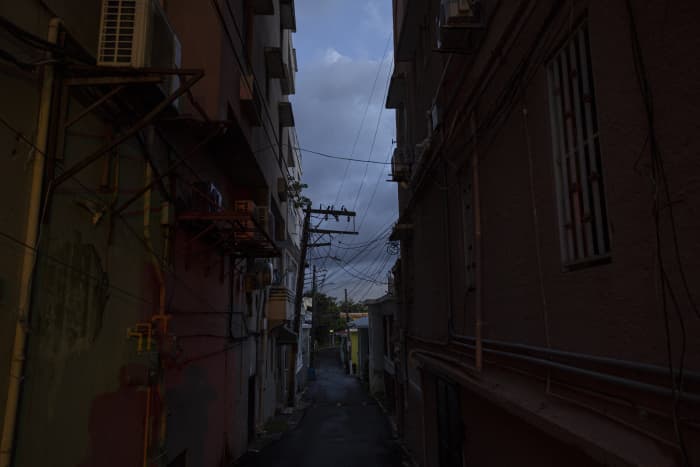
This article is more than
8 year oldThe most iconic image from Donald Trump's helmsmanship of last year's Puerto Rico crisis is the clip of the president in a windbreaker tossing paper towels, free-throw style, to survivors of Hurricane Maria.
Other responses were equally disquieting: Trump's assurances that federal emergency managers were doing an "incredible job." His Twitter war with the despairing mayor of storm-ravaged San Juan. And his odd remark that the island's desolation wasn't a "real catastrophe" like Hurricane Katrina, which slammed the Gulf Coast in 2005, because there were only 16 deaths in Puerto Rico.
The official tally would eventually rise to 64. But it wasn't until this week, with the release of a Harvard mortality analysis, that Americans could fully gauge how their fellow citizens on Puerto Rico fell victim to the deadliest natural disaster on U.S. soil in a century — an estimated 4,645 deaths, well over twice the number killed by Katrina.
FEMA: Our role is to support local governments
The vast majority died not when Maria came ashore but in the storm's aftermath, when a fumbled response by the White House and the territory's government and utilities allowed 3 million islanders to suffer weeks and months without electricity, running water or cellphone coverage. Interruptions or delays in health care killed a third of the victims.
So much went wrong:
►There was insufficient sense of urgency. After an initial emergency declaration when the storm hit Sept. 20, Trump jetted off to his golf club in New Jersey, and four days passed to little effect. It took more than a week before the president waived restrictions barring foreign-flagged vessels from delivering aid and sent 4,400 troops and 40 helicopters to assist victims.
By contrast, after an earthquake devastated Haiti (a Caribbean nation that isn't part of the U.S.) in 2010, President Obama had 8,000 troops en route in two days and 22,000 in two weeks, along with 300 military helicopters airlifting millions of pounds of food and water.
►Contracts were bungled. The federal disaster plan for Puerto Rico called for the Federal Emergency Management Agency to assist local authorities in relief efforts. But the island and its utilities were quickly overwhelmed, and FEMA was slow to realize this. The Puerto Rico Electric Power Authority disastrously hired a tiny, inexperienced Montana firm to restore power.
FEMA, meanwhile, tapped an Atlanta business with a poor federal contract history to deliver food. The company only managed to provide hurricane victims with 50,000 of 18.5 million promised meals.
►Power restoration floundered. Not only did FEMA inexplicably fail to push the island to seek direct assistance from mainland utilities, the most common move by stricken communities for quickly restoring power, but the federal agency also gave the Army Corps of Engineers the long-term task of rebuilding Puerto Rico's power grid — a job for which the corps was unprepared and had never before undertaken. It took months to restore power to most of the island.
Presidents are judged by how they handle natural disasters. George W. Bush was rightly criticized for his administration's initially clumsy response to Katrina. And while the Trump administration responded well when Hurricane Irma lashed Texas and Florida last September, it should — and must — bear considerable blame for the terrible loss of life in Puerto Rico.
Friday marks the first day of a new hurricane season. Another disaster-response failure cannot be an option.
USA TODAY's editorial opinions are decided by its Editorial Board, separate from the news staff. Most editorials are coupled with an opposing view — a unique USA TODAY feature.
To read more editorials, go to the Opinion front page or sign up for the daily Opinion email newsletter. To respond to this editorial, submit a comment to letters@usatoday.com.
If you can't see this reader poll, please refresh your page.